about babies
These days many parents have not had a lot of experience with babies until their first baby comes along. If you are one of these parents you will probably find you have many questions about this new person who has come into your life and who is so small and helpless. It can be overwhelming and scary when you realise your baby is so dependent on you for everything, especially if you feel you don’t know a lot about babies. Understanding what babies are like may help to make it easier to care for your baby.
Reading with babies brings together many of the things they need most to grow and develop - closeness, safety, touch, seeing, hearing and learning about sounds, as well as gradually learning about what they mean? Sharing a book, or a magazine, looking at pictures and hearing your words is a very special time. Babies learn that reading is a ‘feeling good’ time.
Article provided courtesy of Parenting SA
What are babies like?
Every baby is different
- Babies do some things ‘automatically’ without knowing they are doing them. These are called reflexes. For example, if something is put in their mouths they suck on it (sucking reflex), and if something is put in their hands they hold on tight (grasp reflex). If they are startled or upset they fling their arms out and throw their heads back (startle reflex).
- Babies’ heads can sometimes be uneven in shape after the birth or because of the way they sleep. This is nothing to worry about and goes away as they grow.
- The ‘soft spot’ (fontanelle) on top of a baby’s head is there so the baby can more easily fit through the birth passage when he is being born. This spot will close over in the baby’s first year or so. The skin over the soft spot is strong and you cannot hurt babies by gently washing or brushing their heads. Sometimes the fontanelle swells when the baby is crying and goes flat when the crying stops.
- Cradle cap is crusty scales on the head. You can rub it with olive oil or petroleum jelly to soften it one evening and wash it off the next day. Gently lift off the scales with a fine-toothed comb or fingernail. If it is really bad and does not improve see your doctor.
- Some babies have sticky eyes due to a blocked tear duct. Ask your doctor how to manage this. It is not serious.
- Some babies have little white lumps like tiny pearls in their mouth, especially on the gums. These are normal and go away when the baby grows.
- Babies are often born with puffy genitals and breasts (sometimes even ‘milk’ comes from the breasts). This is from the mother’s hormones,is not a problem and it does not last long.
- Babies sometimes get a lump (hernia) underneath their belly button (umbilicus). It may swell if the baby is crying. This is a small gap in the ‘tummy’ muscle and will nearly always go away in time. It does not need treatment and does not cause health problems.
- Most babies have spots on their faces and often on parts of the body in the first few weeks. These can look like acne - red spots with white centres. They are not acne and they do not need any treatment. They seem to be a reaction to the skin being exposed to air rather than to fluid in the womb (uterus) before birth. Sometimes the spots come when the baby gets hot or has been lying on that side. If they go away within an hour or so they are probably this kind of spot.
- Lots of babies have hiccups after feeds. This is normal.
- Some babies spill a little milk after feeds. If they are growing well and happy this is nothing to worry about. If your baby is bringing up milk in big spurts often you need to see your doctor. If your baby is not putting on weight or is miserable often, talk to your doctor or child health nurse.
- Very young breastfed babies do several ‘poos’ a day. Even if baby seems to be pushing hard, the poo is usually very soft. After a few weeks your baby may only have a poo every few days and it will still be soft. All this is normal.
- Bottle fed babies might have firmer poos. If the poos seem very hard, try a teaspoon of brown sugar in a little boiled water before a feed (once or twice). Don’t keep doing this after the poos are soft again.
- Babies usually start to get their teeth at about six months and usually have all their baby teeth by the time they are three years old. These teeth need to be looked after and brushed. Avoid giving bottles of juice or milk at bedtime. The sugars in these drinks stay in the mouth and can cause tooth decay.
- Some babies don’t have any teeth until they are one year old. Sometimes a baby is born with a tooth. All this is within the normal range.
What your baby can do
Remember that every baby is different. While babies usually follow similar patterns with their development your baby might do things faster or slower or differently from other babies and this is usually fine. If your baby is doing things much more slowly or not doing some things at all, it is a good idea to check with your doctor to make sure that all is going well. Here are some other things your baby will probably be able to do.- By six or seven weeks he can smile at you when you smile at him. (Sometimes babies smile earlier than this.)
- By two months he can hold up his head when you are holding him upright and lift his head up if he is lying on his tummy.
- By three months he will enjoy hitting toys that make a noise and he can hold a rattle for a short time.
- By four months he may be able to roll from his front to his back, but it may be another couple of months, or more, before he can roll from his back to his front.
- By seven months he will be sitting up and might be starting to crawl.
- By nine months many babies can pull themselves up to stand. Some babies take longer. It takes another two or three months or so before he can stand without holding onto something. It will then take a few more weeks before he can actually walk.
- By twelve months babies will ‘talk’ to you in their own language and may say one or two clear words - probably one of them will be ‘No!’. Your baby will be able to hold something with his thumb and forefinger and play little games like wave goodbye and ‘pat-a-cake’.
What your baby can see, hear, taste and feel
Newborn babies may seem very helpless and vulnerable. In many ways they are, but they can see, hear, taste, smell and feel. They can move their arms and legs (though they cannot control the movements) and they can suck. They show their feelings and needs (such as their need for comfort and feeds) by crying. They are able to detect and react to the tone of your voice, and the gentleness of your touch.Seeing
Your baby can see quite well at birth, especially things that are close.- She will be able to see your face and will soon learn to recognise you.
- She will be able see to objects that are further away, but they will be blurry. Her distance vision will develop over the next few months.
- Babies can see the different colours, but as they do not understand colours they may like simple shapes, each in one colour.
- In the first few weeks, a baby’s eyes often cross, or wander in different directions some of the time.
- By the age of 3 months the eyes should be lined up so that they both look at the same object.
- If a young baby’s eyes are turned in or out most of the time, or if a baby over 3 months old has turned eyes, the baby needs to have his eyes checked.
- Some babies and young children have turned eyes some of the time (more often when they are tired or unwell). These babies should also have their eyes checked.
- Babies’ eyes may change colour and you may not know what colour their eyes will be for several months.
Hearing
- Your baby has been hearing since well before birth. He has heard you from inside the womb and is familiar with your voice and the sounds around him.
- You may notice that he tends to calm down if you make soft noises, and that he startles if there is a sudden loud noise.
- Babies seem to like high voices and animated faces. This might be why people often talk to babies in a higher voice.
- Your baby can hear voices, and takes notice of the tone you are using, but he cannot understand any words yet. By talking to your baby from the time that he is born, you can help him start to understand that sounds make words and have meaning.
- Listen to your baby’s noises and sounds and copy them. When you copy your baby it is like saying ‘I can hear you’. This is the start of teaching your baby to talk.
Smell and taste
- Babies are born with senses of smell and taste. They are said to be able to recognise the smell and taste of their mother’s milk. They may refuse to drink if the milk tastes different.
- Babies can tell different tastes such as salty, sweet, sour and bitter.
- They react to unpleasant tastes such as some medicines.
- They do not need salt or sugar on their foods when they start eating solids. They learn to like the tastes they are given.
Feeling
- Babies are sensitive to touch from the time they are born and they can feel pain.
- Gentle, caring touch is very important so babies feel loved and cared for. Some parents enjoy learning how to give baby a massage.
- Nappy rash is very painful for babies, and they will be quite unsettled.
Moving
- Most of a baby’s movements are random and the baby is not able to control them at first. These are called reflexes.
- There are several reflexes, such as the startle reflex (the baby’s arms stretch out and her back arches and his head goes back), and the grasp reflex (he will grip something that is put onto the palm of his hand – such as your finger). These reflexes will decrease over the next few months as your baby gets more conscious control of his movements.
- When something touches his face he will turn towards it (the rooting reflex) and he will suck on it. Sucking is a reflex too; your baby will suck on things that are put into his mouth. Some babies will even be sucking their thumbs when they are newborns. Babies need to suck so that they can survive. Many babies find sucking on something very soothing.
- Babies also have a ‘tongue thrust’ reflex. In the early months when something is placed into their mouth they will tend to push it out using their tongue. This often happens when they are started on solids. It does not mean that they do not like the taste of the food; it is because they need to learn how to control their tongue.
- Most babies will start to smile by the time that they are around 6 weeks old, and they will be able to move their head a little.
Reading
Many parents have not (until recently) thought about reading books to babies. We now know that a few minutes each day, will make a difference to a baby’s development.Reading with babies brings together many of the things they need most to grow and develop - closeness, safety, touch, seeing, hearing and learning about sounds, as well as gradually learning about what they mean? Sharing a book, or a magazine, looking at pictures and hearing your words is a very special time. Babies learn that reading is a ‘feeling good’ time.
Reminders
- Every baby is different even in the same family.
- The best way to get to know what babies are like is towatch and learn from your own baby.
- Babies grow and learn faster than they will at any other stage of life. What they do will be continually changing.
- Take time to enjoy the new things your baby is learning and doing.
- If you have questions, ask for information. Most other parents have exactly the same question.
- Ask for help if you have any worries about your baby.
Article provided courtesy of Parenting SA
advertisements
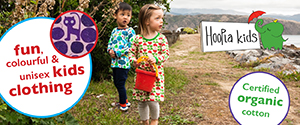
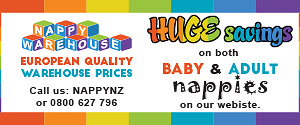
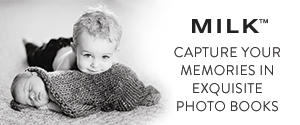

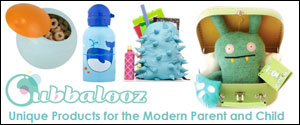
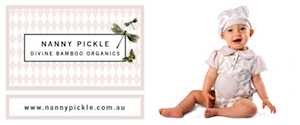
| 1. 10 candles to light your fire - how much fun can you fit on your cake?! 2. Hoopla kids - Scrumptious looking gears to brighten your kids' wardrobes 3. How to dress your child for a special occasion 4. Fruity pineapple flamingo party - Sweet, bright and sunny 5. Spanish Baby Bites- European sleeping bags that are unique and adorable |
|
|
| 1. Upcycling baby clothes - Turn your most treasured items into something that lasts 2. Grace's ballet party - celebrate your tiny dancer 3. After the birth - What to expect when you've welcomed your bundle of joy 4. Lalaloopsy party - How to craft your party around a centrepiece 5. 10 candles to light your fire - how much fun can you fit on your cake?! |
|
|
| 1. Scone peapods - the cutest and most delicious vegetables around 2. Lalaloopsy party - How to craft your party around a centrepiece 3. Superkids Scroggin- An innovative lunchbox idea 4. Jeffrey's Lego Party - totally Legotastic 5. Best indoor playsets - Unbelievable fun most of us can only dream of! |





